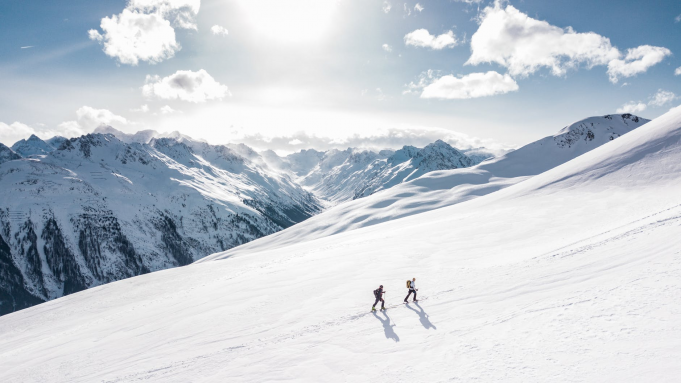Since the inception of mountaineering, some of the world’s highest peaks have witnessed several types of climbers. While beginners tend to battle meager ones, experienced ones challenge themselves to summit a climb. One needs to understand the basic philosophy of climbing. Performing an expedition is not only about climbing a trail but an act of resilience. A climber must plan every move; that is why veteran climbers recommend budding enthusiasts to perform specimen climbs before making it to the actual summit.
When it comes to Mount Logan, Canada’s highest mountain, it is one of the most climbed and popular amongst the climber community. The range sits around ten miles from Canada’s enormous Yukon Territory’s Alaskan border. Furthermore, the summit rises 5,959 meters above sea level and is North America’s second-highest peak, falling short by 181 meters to Denali. Even though this summit does not require technical climbing, its height does pose a challenge. Mount Logan is a part of one of the world’s more remote regions, which sees it soaring about 3000 meters above surrounding peaks.
Such an enormous base bed of the mountain serves as a massif. Be it Everest, K2, or any other summit, Logan’s length measures at 20 kilometers and is 5 kilometers wide, referred to as the most prominent mountain on Earth. If you are a climber, looking to challenge this enormous piece of nature, there are several things you need to know before stepping onto the belt of the summit. Here is a rundown of the top five facts and insight that will help you quench through the challenge.
1. Climbing Routes
There are a couple of primary routes to reach Mount Logan’s summit – The East Ridge and The Kings Trench.
The route of East Ridge is an alpine climbing route that takes you up to the summit. Looking for an exhilarating experience? This route comprises some of the worthwhile and challenging high alpine wall climbs in the entire North American region. While climbing through this route, you have to follow a steep and narrow ridge-line, which trails for 4000 vertical meters. Meanwhile, The Kings Trench way is one of the least technical ones and involves skiing through enormous glacier systems that lie on the massif’s western side. Mount Logan’s very first climbers took The Kings Trench Route in 1925.
2. Total Duration To Reach The Summit
Most of the expedition tours to Mount Logan’s summit take around three to four weeks, which excludes the to and from movement from Haines Junction. Due to Logan’s enormous size, climbers have to spend a significant amount of time approaching the base camp. However, the ascent only requires a week since climbers need to go through a slow acclimatization process. The entire range experiences heavy rain in summer months, followed by unpredictable weather conditions during the climbing season, which, in turn, demands more days of climbing.
3. Difficulty Levels
Making your way to the summit is difficult due to the mountain’s prominence of 5250 meters. Throughout your climb, you will have to hike, split board or ski, climb while carrying the full gear on your shoulders. In case you have already finalized your tour, experts who have previously climbed this gigantic mountain recommend that pose a combination of mountaineering and skiing experience, coupled with the utmost fitness levels.
Alongside these, it would be better if you’d spend some time doing winter camping. That is because the climb’s four camps are located around 4000 meters above in elevation. In the end, it’s a cold, and big remote area, which experiences a lot of glaciation and extreme weather.
4. Equipment
When you have proper tools and equipment to climb Mount Logan, you are in for a lifetime experience. However, if you are not aware of what you require beforehand, here is a list of necessary equipment.
- Skis, shorter (160 – 185cm) mid-fat to fat ski (dynafit tech bindings)
- Ski Poles split boarders
- Climbing skins
- Ski boots/snowboard boots
- Strap on boot crampons
- Ski crampons
- Snow shovel
- Avalanche beacon equipped with fresh batteries
- Daypack, 35-45L
- Avalanche probe
- Sunglasses with side shields
- Expedition pack 65-75L
- Ski goggles
- -30 deg down sleeping bag
- Small blister 1st-Aid Kit
- Insulate pad
- Insulated Therma-rest
- Lightweight climbing harness suitable for glacier travel
- One sewn sling and 2x 4-6 m long 6mm cord
- Two non-locking carabiners, 3x locking carabiners
- Standard lightweight ski mountaineering ax 50-70 cm
- 2x ice screws
- 1-2 big duffle bags
5. Weather and Best season
The best climbing conditions lie from May to August, offering an average temperature of less than 20ºC. The temperature tends to fall when you gain height. And, once you have crossed the 5,000 meters mark, you might be well below the freezing point.
Final Thoughts
Conquering the mountain’s mammoth area is challenging and has also posed difficulties to professional climbers. Even if you are stocked well, trained at par, and ready to make the summit, nature can often be a piece of unfinished poetry. As a result, it is vital to have the Gods of nature by your side, along with everything listed here.










